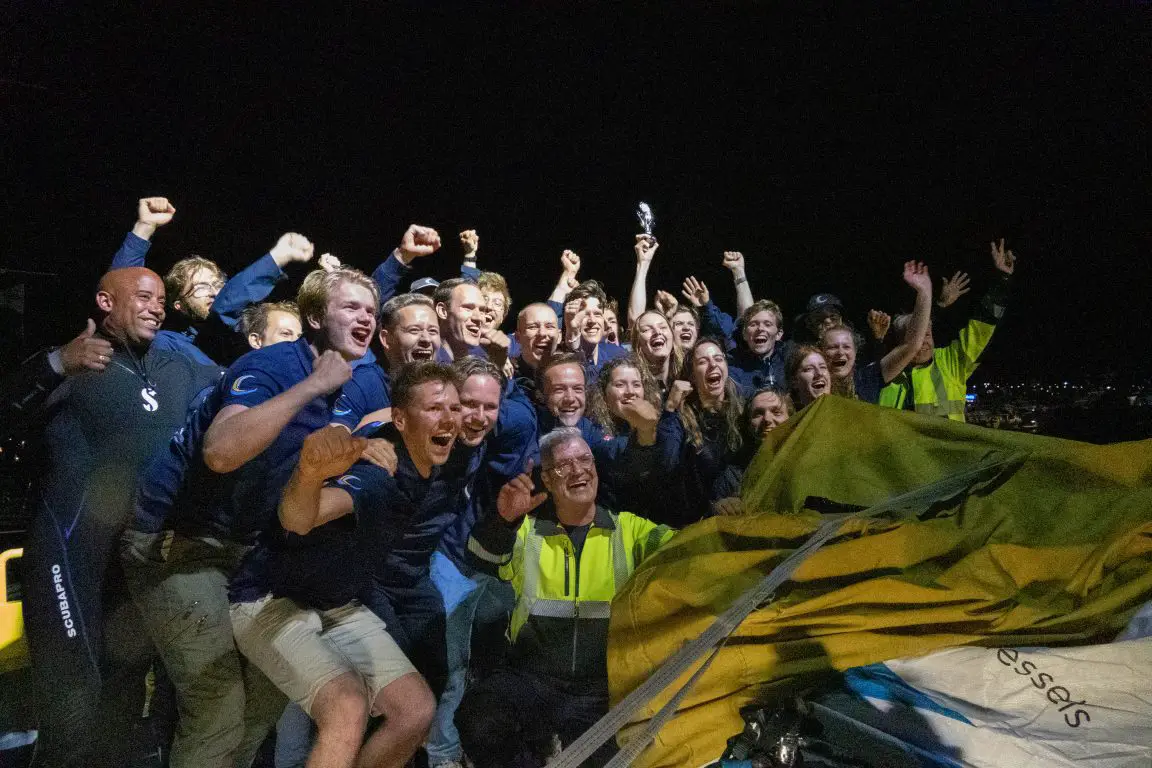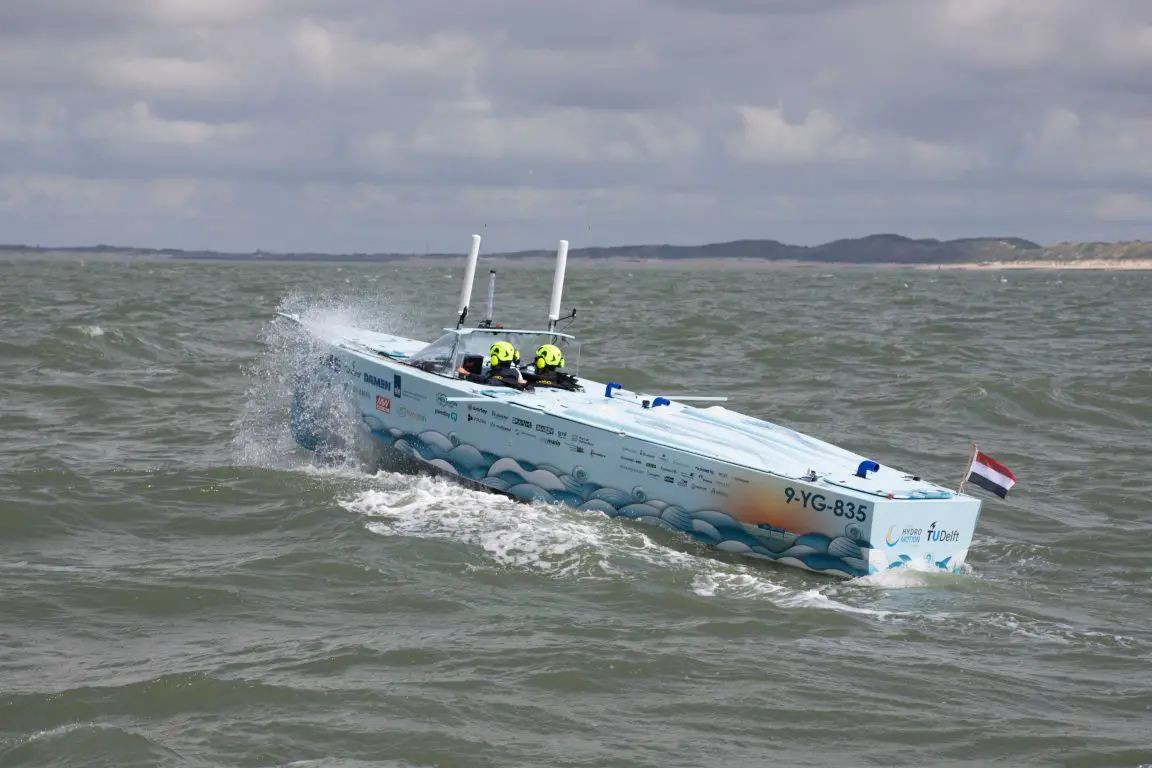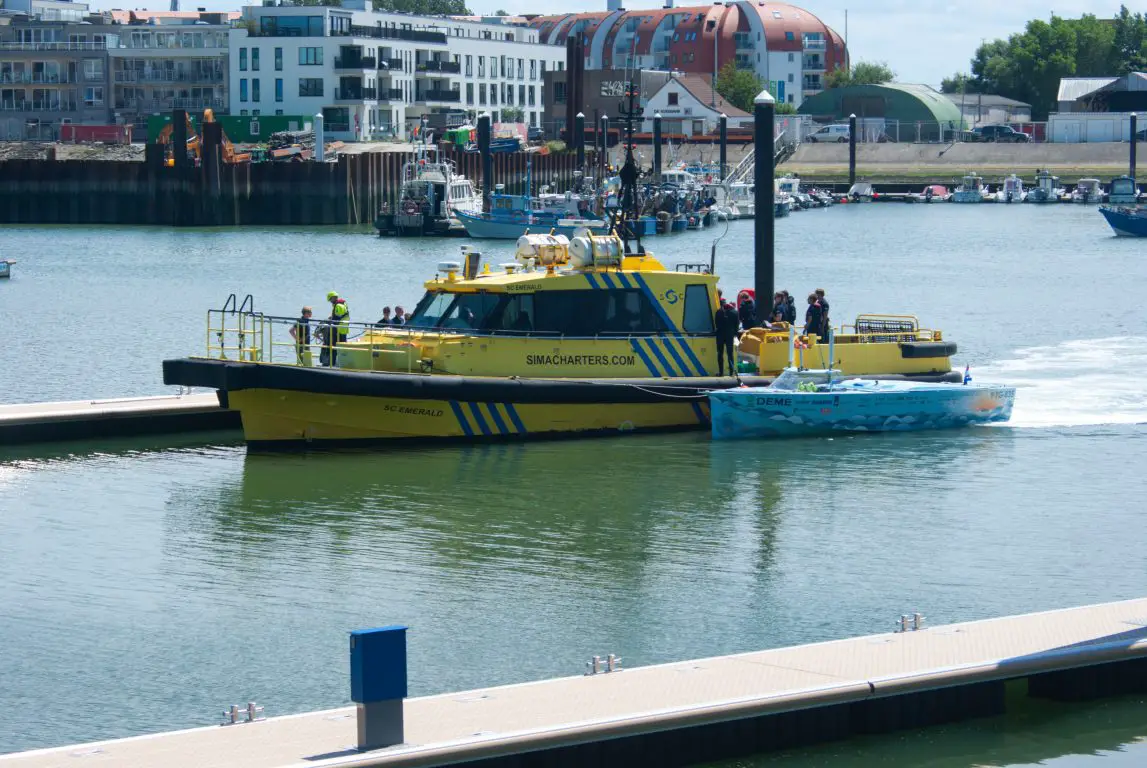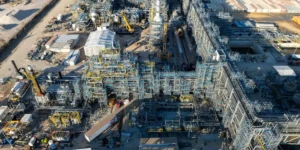TU Delft’s Hydrogen Boat Makes History – Hydrogen Fuel News

TU Delft Hydro Motion Team Makes Historic Hydrogen-Powered Crossing
On July 11th, Dutch students from the TU Delft Hydro Motion Team made history by arriving in Ramsgate with their self-built hydrogen boat, becoming the first to cross from the Netherlands to England with a fully hydrogen-powered vessel. Departing from Breskens, they completed the nearly 169-kilometer journey across the North Sea on a single tank of hydrogen, aiming to showcase the potential of hydrogen as a sustainable alternative for the maritime sector.
The Design and Build
The boat, built by the team at TU Delft, is a foiling hydrogen-powered marvel designed for maximum reliability and seaworthiness. Here are some highlights of its design and construction:
- Monohull Efficiency: The boat features a monohull design optimized for efficiency and stability, crucial for the rough conditions of the North Sea.
- Handmade Components: Each component was handmade by the team, with meticulous assembly of all subsystems to ensure top-notch performance.
- Hull Construction: The hull, produced entirely by the team members, involved ten weeks of cutting fibers, laying carbon, and vacuum infusing.
- Wave-Cutting Design: A sharp bow and larger chine help the boat cut through waves effectively and assist with lift-off before foiling.
- Wide Foil Configuration: The larger hull shape allows for a wider foil configuration, enhancing stability during flight.
- Weight Considerations: The design balances the increased weight of a larger hull with the need for efficient foiling capabilities.
Production of Hydrogen Boat
Innovative Systems
The boat’s hydrogen system and other technological innovations are particularly noteworthy:
- Hydrogen Fuel Cell: The boat’s propulsion relies on a hydrogen fuel cell, where hydrogen and oxygen are converted into electricity and water, providing an environmentally friendly power source.
- Elliptical Foils: The foils, capable of lifting 1.8 tons out of the water while minimizing drag, are crafted in an elliptical shape for optimal performance.
- Extended Struts: Increased strut length allows the boat to fly high above North Sea waves, improving stability in rough waters.
- Height Control System: An optimized height control system ensures quick and powerful adjustments during foiling.
- Saltwater-Resistant Systems: All electrical systems were treated to handle saltwater conditions, ensuring durability and reliability.
- Buffer for Repairs: A specially produced buffer enables quick and efficient repairs, boosting overall reliability.
Advanced Navigation and Communication
Ensuring seamless communication and navigation was critical for the success of the crossing:
- Electromechanical Steering: An electromechanical steering system allows pilots to maneuver the boat easily without exerting great force.
- Enhanced Connectivity: The team installed their own internet connection, upgraded the mariphone, and added a reliable navigation system to maintain communication and navigate effectively.
Testing and Preparation
Before embarking on their historic journey, the team conducted extensive testing to fine-tune their systems and prepare for the crossing. This included vibration resistance tests and numerous safety protocols to handle the challenging conditions of the North Sea.
Historic Hydrogen Boat Voyage
The Significance
This groundbreaking achievement is not just a technical triumph; it sends a powerful message about the potential of hydrogen as a sustainable fuel for the maritime industry. By completing this journey, the TU Delft Hydro Motion Team hopes to inspire a shift towards greener technologies in maritime transportation.
As they crossed the North Sea, these innovative students demonstrated the real-world application of their boat, proving that hydrogen-powered boats can be both reliable and seaworthy. Their journey marks a significant milestone in maritime history and sets the stage for future advancements in sustainable marine technology.
The team’s ambition to become the first-ever fully hydrogen-powered foiling boat to cross the North Sea underscores their pioneering spirit and commitment to steering the future towards sustainable solutions. Welcome aboard the next wave of maritime innovation.
To Learn More About the TU Delft Hydro Motion Team – https://hydromotionteam.nl/

Team Photo in Ramsgate







